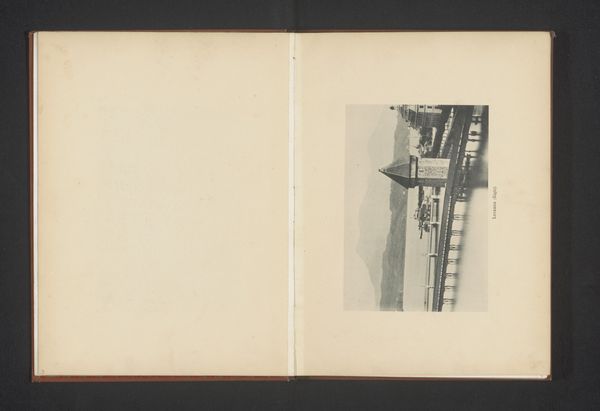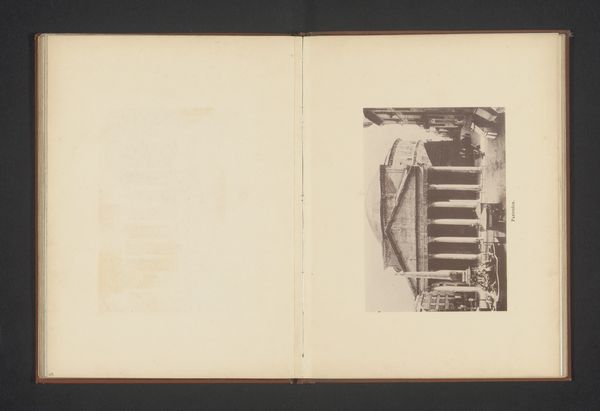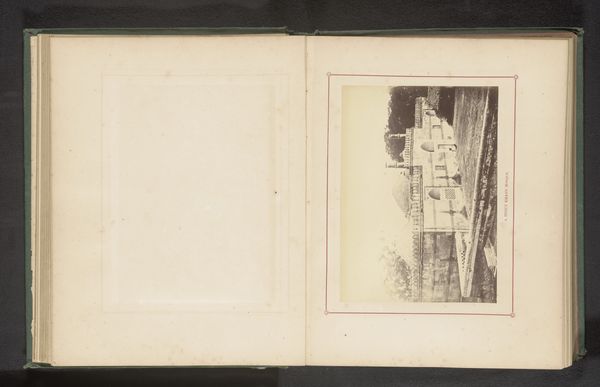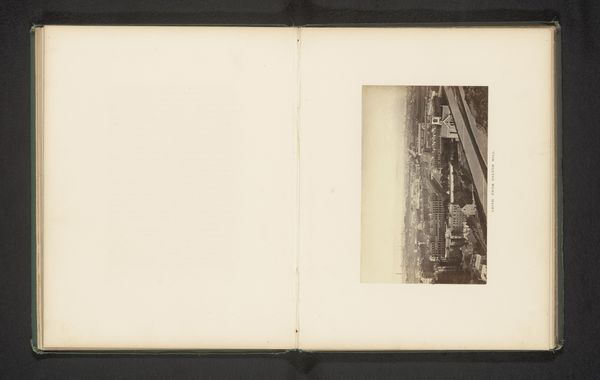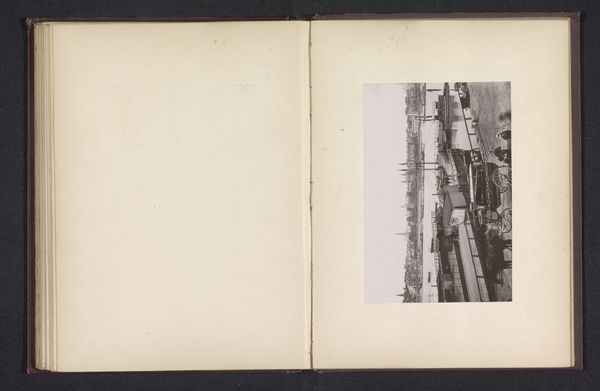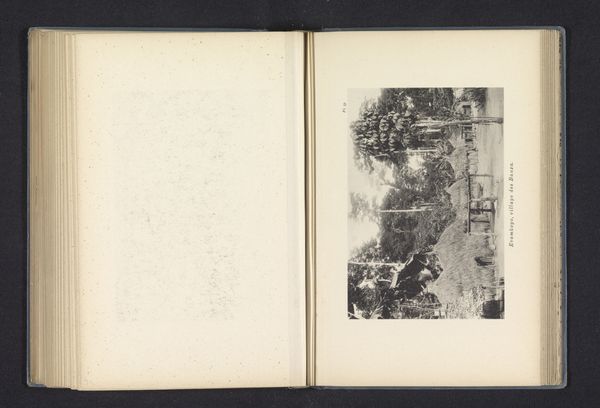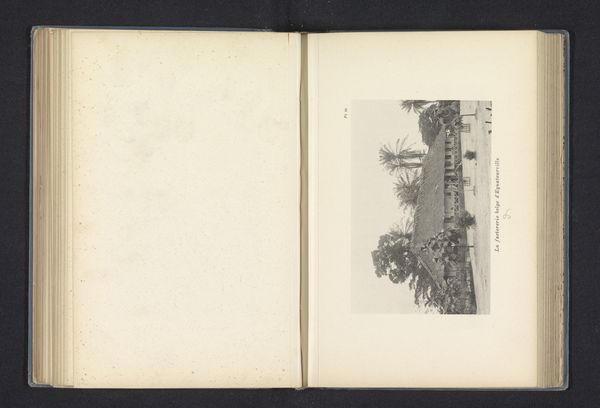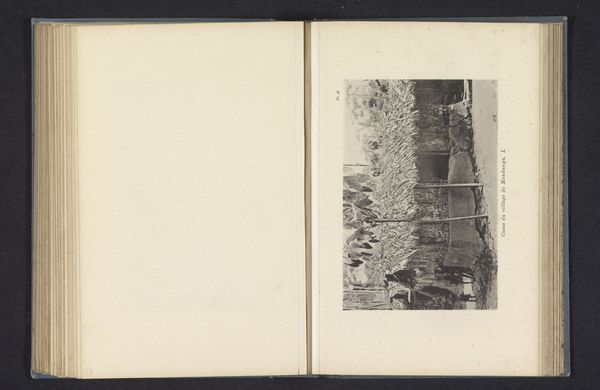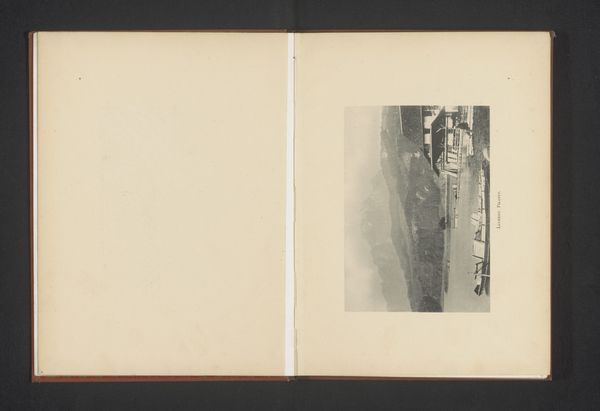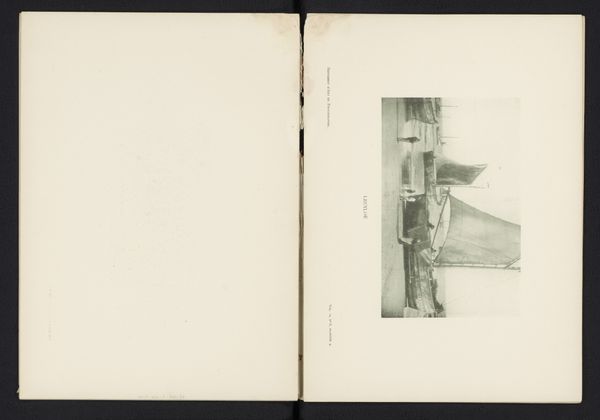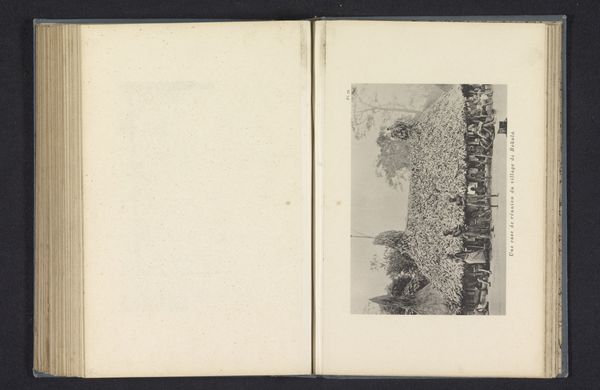
Dimensions: height 118 mm, width 165 mm
Copyright: Rijks Museum: Open Domain
Curator: I'm struck by the imposing, almost dizzying perspective. The vast interior of St. Peter's Basilica, captured in an engraving, looms above us. There's a stark contrast created by the print. Editor: Indeed. What we have here is a print, likely an engraving, titled "Gezicht op het interieur van de Sint-Pietersbasiliek in Vaticaanstad," giving us a view of the interior of St. Peter's Basilica. Its date is listed as before 1898, placing it within a period where architectural prints like this served a crucial role in disseminating knowledge about significant buildings. Curator: I can only imagine the impression it had on viewers who had never travelled to Rome! The symbolic weight of the papacy is amplified by the building's overwhelming scale depicted here. This angle from below, is intended to have the viewer look "up" to something divine, it truly emphasizes hierarchy and faith. Editor: Absolutely. These prints were essentially the architectural photography of their time, widely distributed as part of a burgeoning visual culture. The accuracy and detail were of utmost importance. Look at the Neoclassical style's emphasis on order, geometry, and the clear articulation of space in this representation of the Basilica. Curator: That explains the geometry dominating everything! It makes me feel tiny but in an inspiring way. Is the intent to make the viewer consider not just the sacred architecture but also its legacy? Editor: Without a doubt. By distributing such imagery, powerful institutions cemented their presence in the cultural imagination. These aren't neutral documents; they played a role in shaping public perception, reflecting papal power through meticulous rendering of architecture. Curator: Seeing the Basilica as a symbol of something much bigger brings history to life, it underscores how visual messaging affects identity and legacy even across centuries. It speaks volumes about enduring themes that impact the modern-day. Editor: The historical function of imagery as political propaganda is quite striking. I now realize that something which looks quite simple on its face holds deeper political messages.
Comments
No comments
Be the first to comment and join the conversation on the ultimate creative platform.
